Ford Puma vs Mercedes GLB – Differences & prices compared
Compare performance, boot space, consumption and price in one view.
Find out now: which car is the better choice for you – Ford Puma or Mercedes GLB?
The Ford Puma (SUV) comes with a Petrol MHEV or Electric engine and Manuel or Automatic transmission. In comparison, the Mercedes GLB (SUV) features a Petrol MHEV or Diesel engine with Automatic transmission.
When it comes to boot capacity, the Ford Puma offers 523 L, while the Mercedes GLB provides 570 L – depending on how much space you need. If you’re looking for more power, decide whether the 168 HP of the Ford Puma or the 320 HP of the Mercedes GLB suits your needs better.
In terms of consumption, the values are 13.10 kWh5.40 L per 100 km for the Ford Puma, and 5.60 L for the Mercedes GLB.
Price-wise, the Ford Puma starts at 24800 £, while the Mercedes GLB is available from 40500 £. Compare all the details and find out which model fits your lifestyle best!
Ford Puma
The Ford Puma presents itself as a stylish compact SUV with a distinctive design that combines practicality with a dynamic driving experience. Its sleek lines and sporty aesthetics make it stand out on the road, while the interior offers a comfortable and tech-savvy environment. With an emphasis on efficiency and a smooth drive, the Ford Puma is well-suited for both urban commutes and countryside adventures.
details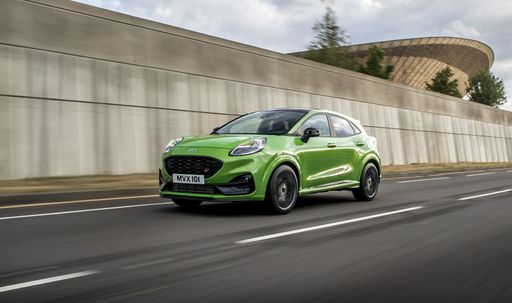 @ puma.fordpresskits.com
@ puma.fordpresskits.com
 @ puma.fordpresskits.com
@ puma.fordpresskits.com
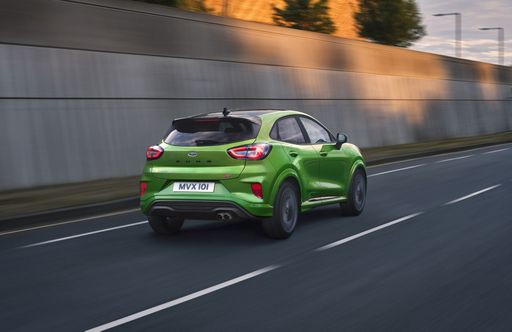 @ puma.fordpresskits.com
@ puma.fordpresskits.com
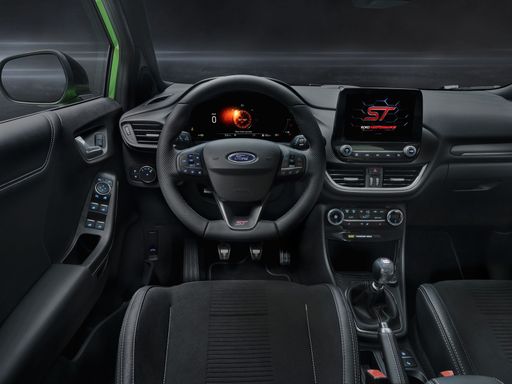 @ puma.fordpresskits.com
@ puma.fordpresskits.com
Mercedes GLB
The Mercedes-Benz GLB exudes a robust yet sophisticated presence, combining the versatility of an SUV with the elegance the brand is renowned for. Its spacious interior is thoughtfully designed to accommodate modern lifestyles, offering flexibility and comfort for both drivers and passengers. With advanced technology seamlessly integrated throughout, the GLB ensures a driving experience that is both dynamic and intuitive.
details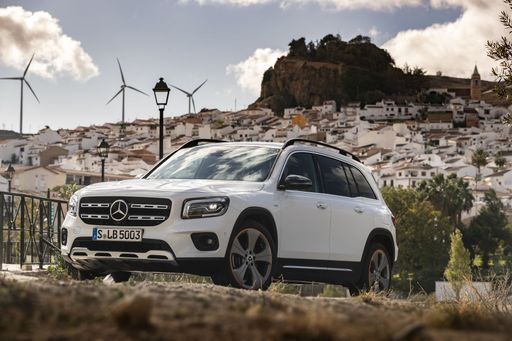 @ group-media.mercedes-benz.com
@ group-media.mercedes-benz.com
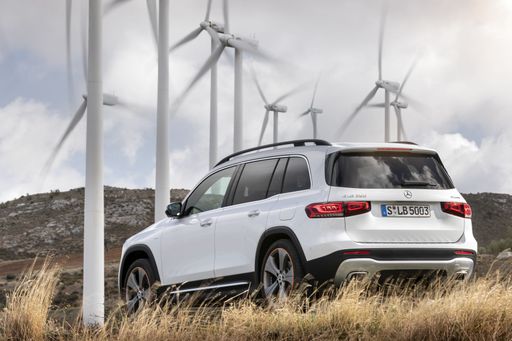 @ group-media.mercedes-benz.com
@ group-media.mercedes-benz.com
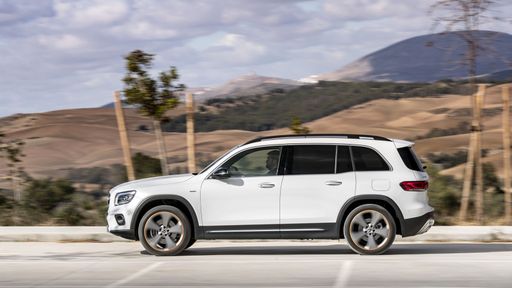 @ group-media.mercedes-benz.com
@ group-media.mercedes-benz.com
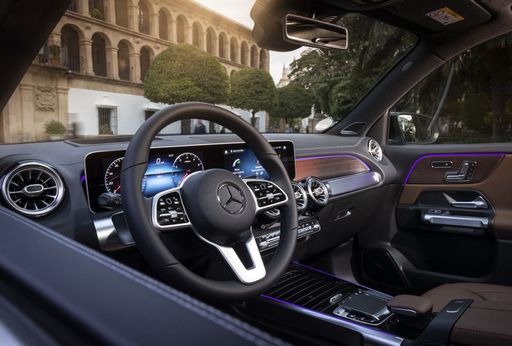 @ group-media.mercedes-benz.com
@ group-media.mercedes-benz.com
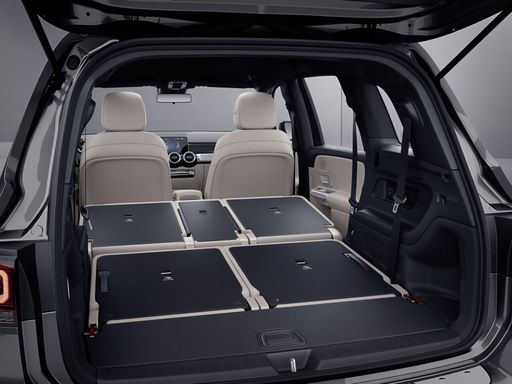 @ group-media.mercedes-benz.com
@ group-media.mercedes-benz.com

|

|
|
|
|
Costs and Consumption |
|
|---|---|
|
Price
24800 - 36300 £
|
Price
40500 - 65300 £
|
|
Consumption L/100km
5.4 - 6 L
|
Consumption L/100km
5.6 - 9 L
|
|
Consumption kWh/100km
13.1 - 13.7 kWh
|
Consumption kWh/100km
-
|
|
Electric Range
364 - 376 km
|
Electric Range
-
|
|
Battery Capacity
43 kWh
|
Battery Capacity
-
|
|
co2
0 - 136 g/km
|
co2
146 - 204 g/km
|
|
Fuel tank capacity
42 L
|
Fuel tank capacity
52 - 60 L
|
Dimensions and Body |
|
|---|---|
|
Body Type
SUV
|
Body Type
SUV
|
|
Seats
5
|
Seats
5
|
|
Doors
5
|
Doors
5
|
|
Curb weight
1316 - 1563 kg
|
Curb weight
1640 - 1820 kg
|
|
Trunk capacity
456 - 523 L
|
Trunk capacity
565 - 570 L
|
|
Length
4186 - 4226 mm
|
Length
4634 - 4650 mm
|
|
Width
1805 mm
|
Width
1834 - 1850 mm
|
|
Height
1550 - 1555 mm
|
Height
1665 - 1692 mm
|
|
Payload
367 - 469 kg
|
Payload
500 kg
|
Engine and Performance |
|
|---|---|
|
Engine Type
Petrol MHEV, Electric
|
Engine Type
Petrol MHEV, Diesel
|
|
Transmission
Manuel, Automatic
|
Transmission
Automatic
|
|
Transmission Detail
Manual Gearbox, Dual-Clutch Automatic, Reduction Gearbox
|
Transmission Detail
Dual-Clutch Automatic
|
|
Drive Type
Front-Wheel Drive
|
Drive Type
Front-Wheel Drive, All-Wheel Drive
|
|
Power HP
125 - 168 HP
|
Power HP
116 - 320 HP
|
|
Acceleration 0-100km/h
7.4 - 9.8 s
|
Acceleration 0-100km/h
5.5 - 11.5 s
|
|
Max Speed
160 - 210 km/h
|
Max Speed
188 - 250 km/h
|
|
Torque
170 - 290 Nm
|
Torque
230 - 400 Nm
|
|
Number of Cylinders
3
|
Number of Cylinders
4
|
|
Power kW
92 - 124 kW
|
Power kW
85 - 235 kW
|
|
Engine capacity
999 cm3
|
Engine capacity
1332 - 1991 cm3
|
General |
|
|---|---|
|
Model Year
2024 - 2025
|
Model Year
2025
|
|
CO2 Efficiency Class
D, E, A
|
CO2 Efficiency Class
E, F, G
|
|
Brand
Ford
|
Brand
Mercedes-Benz
|
Ford Puma
A Glimpse into the Ford Puma: Fusing Style with Innovation
The Ford Puma stands as a testament to modern engineering fused with style. This compact SUV is not just about aesthetics but brings to the table an array of technical innovations, topped with the reliability and performance Ford is known for. Let's delve into the technical specifics and innovative features that make the Ford Puma a stellar choice for any car enthusiast.
Powertrains and Performance
The Ford Puma is offered with a range of powertrains designed to deliver optimal performance whilst minimising fuel consumption. At the heart of this compact SUV is the 1.0 EcoBoost Hybrid engine, available in both 125 PS and 155 PS variants. This engine is a marvel of engineering, optimised to deliver power efficiently with a remarkable fuel consumption ranging from 5.4 to 5.7 L/100km for manual versions, and slightly higher for the automated variants.
The top-end 1.5 EcoBoost ST variant takes performance up a notch, providing a robust 200 PS that propels the Puma from 0 to 100 km/h in just 6.7 seconds. This variant is perfect for those who prioritise performance and exhilaration in their driving experience.
Mild-Hybrid Technology
The Puma's mild-hybrid technology plays a significant role in enhancing fuel efficiency and reducing emissions. By utilising a belt-driven integrated starter/generator, the Puma recovers energy usually lost during braking, storing it in a 48-volt lithium-ion battery. This stored energy is then used to assist the engine, providing a boost during acceleration and smoothing out the stop-start technology, ultimately leading to enhanced fuel efficiency.
Design and Comfort
The Ford Puma does not compromise on style and comfort with its ergonomic and stylish design. The SUV is available in multiple trims including the ST-Line, Titanium, and the luxurious Vignale editions, each offering unique aesthetic and technological enhancements. These trim levels provide varied offerings in terms of both exterior styling and interior comfort, ensuring there's a Puma that meets every personal preference.
Inside, the Puma offers a driver-focused cockpit with advanced technological integrations such as the SYNC 3 infotainment system, providing seamless connectivity and intuitive control of the vehicle's numerous technological features.
Safety and Technology
Safety remains paramount, and the Ford Puma is equipped with the latest security and technology features. It boasts the Ford Co-Pilot360 suite which includes adaptive cruise control, pre-collision assist with autonomous emergency braking, and lane-keeping assist, enabling a safer driving experience on both city roads and highways.
Versatility and Practicality
Beyond performance and safety, the Ford Puma shines in its versatility. With a boot capacity of 456 litres, it offers ample space for all sorts of adventures, whether you're heading on a family trip or loading sports equipment. Its innovative MegaBox is an extra storage solution, providing additional space below the boot floor.
The Puma's agile handling, paired with its compact dimensions—spanning a length of 4186 to 4266 mm and a width of 1805 mm—makes it an ideal choice for urban commuting and beyond.
Conclusion
In conclusion, the Ford Puma beautifully blends practical features with cutting-edge technology, offering a package that appeals to both the tech-savvy driver and those seeking comfort and reliability. Its range of innovative features, powerful yet efficient engine options, and a design that is both functional and stylish make it a frontrunner in the compact SUV market.
Whether you're drawn by the efficient mild-hybrid engines or the robust performance of the ST variant, the Ford Puma represents a modern driving experience where innovation meets everyday usability.
Mercedes GLB
Introduction to the Mercedes-Benz GLB
The Mercedes-Benz GLB is an SUV that combines practicality with luxury, making it a distinguished choice within its segment. With a variety of engine options, innovative technologies, and the quality craftsmanship expected from Mercedes-Benz, the GLB stands out for its versatility and capability.
Engine Variants and Performance
The Mercedes-Benz GLB offers a range of engine options to suit diverse driving preferences. The petrol variants are equipped with mild-hybrid technology, enhancing efficiency and performance. The diesel counterparts provide robust torque and fuel economy, catering to long-distance commuters. Horsepower for the GLB models ranges from 116 PS to an exhilarating 320 PS in the AMG version, promising a compelling driving experience.
Innovative Technology and Safety Features
Mercedes-Benz has integrated cutting-edge technology into the GLB to ensure both safety and comfort. The MBUX (Mercedes-Benz User Experience) infotainment system allows for intuitive interaction through voice control, touch, and gesture. Safety is paramount with features like adaptive cruise control, lane-keeping assist, and emergency braking, creating a secure cocoon for all passengers.
Design and Interior Comfort
The GLB boasts a striking exterior design, featuring robust SUV characteristics with sleek Mercedes-Benz styling. Its dimensions emphasize practicality without compromising on aesthetics. Inside, the spacious cabin accommodates up to five passengers comfortably, complemented by high-quality materials and advanced features for a premium feel.
Driving Experience and Performance
The driving dynamics of the GLB are tailored for both urban and adventurous terrains. With options for front-wheel and all-wheel drive, the GLB handles a variety of road conditions with ease. Acceleration from 0-100 km/h varies from a swift 5.5 seconds in the AMG model to a more leisurely 11.5 seconds in the entry-level variants, highlighting the versatility within the lineup.
Efficiency and Environmental Considerations
The GLB is mindful of its environmental impact, with CO2 emissions ranging from 146 to 204 g/km. The model employs mild-hybrid technology and efficient diesel engines, achieving fuel consumption between 5.6 and 9 L/100km, depending on the variant, allowing for responsible driving without sacrificing performance.
Conclusion: A Versatile Adventurer
In conclusion, the Mercedes-Benz GLB blends luxury, technology, and practicality into one versatile package. Whether navigating city streets or exploring off the beaten path, the GLB is designed to deliver a superior driving experience, making it a compelling choice for discerning consumers seeking an all-encompassing SUV.
The prices and data displayed are estimates based on German list prices and may vary by country. This information is not legally binding.
